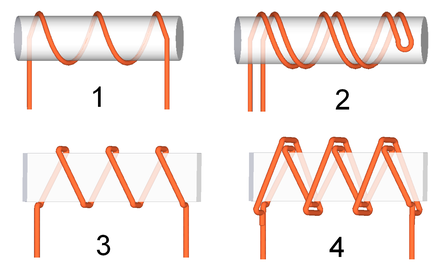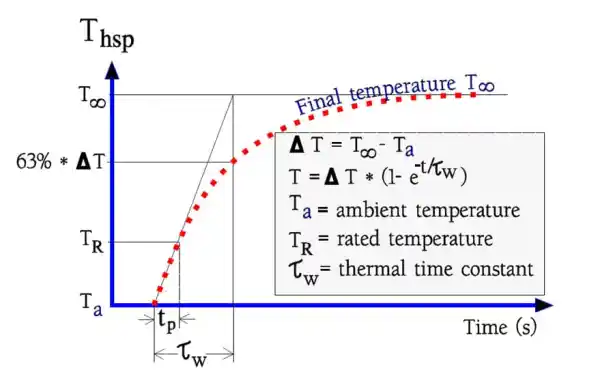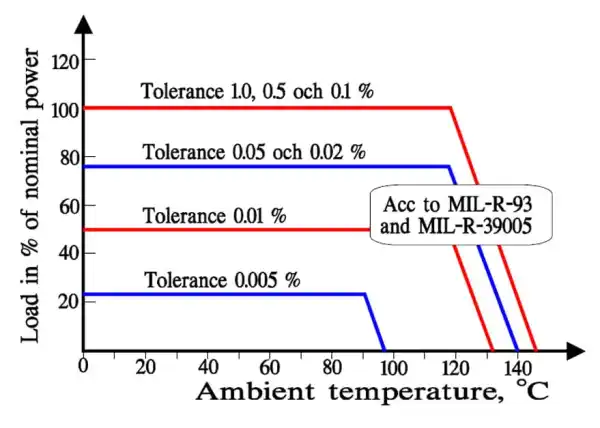
Wirewound Resistors
- Posted by doEEEt Media Group
- On April 2, 2024
- 0
Wirewound resistors are a type of passive component in which metal wires are used to reduce or restrict the flow of electric current to a certain level.
Wirewound Resistor Types
The basic two types of wire-wound resistors are power wire-wound resistors and precision wire-wound resistors.
Power wire-wound resistor.
This is a non-inductive wire-wound resistor that operates at high temperatures. It is commonly used for high-power applications.
Precision wire-wound resistor.
This operates at low temperatures with high accuracy. It is used as a precision resistor in instrumentation because of its high accuracy.
Available tolerances and temperature coefficients vary; devices designed for precision with sub-0.1% tolerance and temperature coefficients in the tens of PPM/°C are available, though the plurality of available devices at the time of writing are specified nearer to 1% tolerance and 200PPM/°C or less.
Wirewound resistors are used only for low frequencies and are unsuitable for high frequencies. At high frequencies, these act as inductors. Hence, non-inductive wirewound resistors are used for high frequencies.
Wirewound resistors are found to be used in almost all major electronic circuits. They are widely used in applications such as telecommunications, computers, audio and video equipment, medical electronic equipment, defence and space, telephone switching systems, transducer instrumentation, current and voltage balancing, and current sensing.
General Comments
As the name indicates, wire-wound resistors consist of a resistive wire wound on a bobbin and are supplied with a protective coating. Because of solderability requirements, the resistance wire can never serve as a termination wire, so it has to be connected to the terminal leads or the like, usually by welding or brazing.
The higher the resistance value, the thinner the wire that has to be used and, thus, the greater the risk of open circuits due to deficient weldings, damage from corrosion or mechanical handling. Below a diameter, Φ, of 0.1 mm (4 mils), the failure rate grows rapidly.
Of course, the winding is inductive, which might be troublesome at frequencies above 50 kHz. Low inductance winding styles exist, but the price and dimensions will increase. They are used for precision wire-wound designs.

Figure 1. Construction sketch of a power wire-wound resistor
The simplest solution is using sections of winding, with inverse winding direction from section to section, thus causing the magnetic fields to counteract each other. Less inductive will be the double-wound winding, where the wire is folded in the middle to a “double-wire” that is wound on the core. The drawback is its capacitive connection between the wire halves. This capacitive connection may be eliminated by the so-called Ayrton-Perry-winding, where two wires are wound in opposite directions on the core and then connected in parallel. The drawback is the increased wire volume. See Figure 2. below.

Figure 2. types of windings in wire resistors.
Types of windings in wire resistors:
- common
- bifilar double-wound
- common on a thin former
- Ayrton–Perry
Table 1 shows examples of inductance in power resistors of the same design as indicated in Figure 1 and also contains information about their capacitance. Capacitance is always developed between adjacent turns and manifests itself at higher frequencies.

Table 1. Examples of inductance and capacitance in wire-wound power resistors. 2] Φ = wire/lead diameter
Power Wirewound Resistors
Introduction
This type of resistor is, as the name indicates, designed to dissipate power. That means comparatively high operation temperatures and limited stability, which in turn influences the tolerance settings. The breakpoint of the power curve is usually situated at 25 °C. The derated part of the curve often aims at zero power at ambient temperatures like 275, 350 or even 450 °C but has a second break point at 250 or 350 °C, as shown in Figure 3. Other characteristic curves don’t have the second break point. They are derated linearly to zero power and reach zero applied power at, for example, 200, 275 or even 350 °C.

Figure 3. Examples of wire-wound power resistor power ratings with two break points.
The high Hot Spot temperatures of power resistors demand particular attention during mounting. Otherwise, adjacent parts may be damaged by the heat. When solder connections are used, it is important to ensure that the temperature in the solder joints does not come near the melting point of the solder.
High operating temperatures require bobbins made of heat-resistant material. Porcelain, alumina, beryllia and glass fiber cores are used. The higher the thermal conductivity, the better. The Hot Spot curve is then flattened and widened to a corresponding degree. Beryllium oxide – beryllia – is the best, but that material is controversial due to its high toxicity in the gaseous or powder state. It is the author’s firm and well-founded opinion that the risk of poisoning is possible only when dry grinding during DPA or on the rare occasion of an electric arc that may hit enamelled resistors. See Caution below. Moreover, beryllium oxide resistors normally are lacquered, not enamelled.
There are four main types of cover/encapsulation:
- vitreous enamel
- cement
- silicon lacquer/plastic molding
- finned aluminum housed.
Pulse Loads
Wirewound power resistors can stand considerable pulse loads. The following outlines apply:
- With reference to resistors pulse load article, P– should be limited to PR at periodic pulse loads. We get the connection from

resistor pulse load equation [1]
For a decreasing resistance, R, the generated power, Vg2/R, may rise beyond permissible values. We may have to set bounds for the allowable pulse load, the pulse time, or both. The following calculations can help determine the conditions.
Utilizing the thermal resistance Rth, we can calculate the Hot Spot temperature Thsp as Rth x Ppulse. If we then calculate with a constant power Ppulse, this power will raise the surface temperature to T∞ , as shown in Figure 3. When the corresponding curve passes TR, we get the time tp. If the power is switched off after that time, the temperature development will certainly be overshot before it turns down again. However, the resistor can stand a certain over-temperature; partly, the Thsp is calculated on the nominal Rth, which is higher than the real Rth, according to Figure 5. Altogether, this will compensate for reasonably hazardous temperatures.

Figure 3. Determination of the time tp when an overloaded resistor attains rated temperature.
The curve in Figure 3. is drawn by means of T∞ and τw which are supposed to be constant in these estimates. If the pulse time is longer than the one in Figure 3., for example 2 tp, we then have to construct another curve through the co-ordinates (2 tp; TR) and reduce the pulse load in correspondence to the decreased T∞.
Vitreous enameled
Vitreous enamel offers excellent protection for power resistors. However, the quality may vary. The enamel should be well-adherent, free of pores, and without any impurities. Quality assurance is necessary to achieve this level of quality.
The high manufacturing temperature of approximately 800 °C brings with it certain problems. At that high temperature, the wire stretches. Since it is wound with a moderate tensional bias, it happens on geometrically large bodies that, in some turns, stick together in a spot because of the capillary forces. Normally, the phenomenon is visible only when an X-ray is used. It looks like turns leaning against each other. It has not been proved that this contact leads to flash-overs between turns or any other troubles (Figure 4).

Figure 4. ”X-ray picture” of a resistor winding:
a) in a normal state; b) with “stick-together” resulting from the enameling.
More troublesome is that the high manufacturing temperature makes it difficult to use solderable wire alloys of copper- nickel, both for the resistor elements and the terminal leads. The latter are tinned after the enameling process but the solderability still is deteriorated compared to that of Cu-Ni alloys.
Bigger power resistors often are manufactured with terminals of bands, lugs, shells or end caps that are soldered, squeezed or fastened with screws to the corresponding terminals on the apparatus.
Caution! If the resistor should be subjected to an unintentional strong over-load the enamel may attain its melting temperature before the wire burns off. Then the vitreous enamel will become conducting and will short-circuit the resistor. If the main circuit has low impedance and is of power type an electric arc is developed that lasts until the fuse cuts off.
Cemented
Cement is a common protection material but provides only touch protection. Generally, moisture protection is poor, but there are exceptions in the market.
Lacquered / Plastic molded
Better than cement are lacquered or plastic molded resistors. Most often, the lacquer is made of silicon. These encapsulations are not affected by the high manufacturing temperatures of the vitreous enamel, and thus, the resistors can be supplied with terminal leads of more solderable alloys.
Aluminum housed, chassis mount
If we supply the resistor with a finned aluminum housing as shown in Figure 5., the Hot Spot temperature is lowered and the temperature better distributed over the length of the resistor body, which in turn permits a stronger load for a specific bobbin size.
Note! The power information of the data sheets concerning this type of resistor applies only if the resistor is mounted on the specified heat sink plates.

Figure 5. Power wirewound resistor with finned aluminum housing.
Adjustable
A quite specific type of fixed resistor is the so-called adjustable one. See the example in Figure 6

Figure 6. Adjustable wirewound resistor.
If possible, use of these should be avoided. The reasons are several. The resistive wire has to be made by alloys that don’t oxidize too easily. The adjustment implies touch contact in the open window. Thus the wire will be more disposed to corrosion than that of a conventional design. The open contact window without any corrosion or touch protection doesn’t make it any better. Finally the actual adjustment procedure is risky. It is very easy to slip with the screwdriver and damage the wire. Below a diameter, F, of 0.2 mm (8 mils) the failure rate starts increasing rapidly. Compared to other power types the adjustable have a 50……100 times greater failure rate.
Low ohmic design
In the range from 5 to 800 mΩ, so-called “low-ohmic” value resistors are offered. The resistance element consists of a straight wire or band to which the terminal leads are welded. As a rule, these resistors are encapsulated.
In the low ohmic range, the TC of the terminal leads plays a greater role. Their own TC is usually strongly positive – for example, copper has + 3900 ppm/°C – and the lower the resistance value, the more the resistance and TC of the terminal lead to influence.
Please remember that the tolerance requirements apply only when we connect according to the manufacturer’s instructions, i.e., at a specified distance from the component body (Figure 7.).

Figure 7. Measurement distance on a low ohmic value wirewound resistor.
Precision Wirewound Resistors
Precision wirewound resistors are characterized by close tolerances, high resistance stability, moderate power ratings/Hot Spot temperatures, and close TCRs. Table 2 shows typical values of these characteristics.
Introduction
More and more precision wire-wound resistors are being displaced with metal film types with the same characteristics but considerably smaller dimensions. In older designs, however, they still exist, and therefore, we will deal with this component type.
In the simplest construction the wire is wound in several layers, something like a spool of thread. Short-circuiting between turns normally is prevented by the polyamide lacquer but there have been occasions when the wire tension during winding has become too great. The polyamide “flows” away and turns have been short-circuited thus resulting in a resistance decrease – in certain cases, intermittently.
In more expensive designs the winding is divided in sections – Figure 8. – and the winding direction is veered round in order to reduce the inductance.

Figure 8. Sectioned wound precision resistor.
The resistors usually are encapsulated in plastic moulding. However, the liquid plastic may after-cure, and the bobbin may change its dimensions. This will inevitably lead to a change in wire tension and a subsequent resistance change. The wire tension is crucial and is held as low as possible during winding. To prevent resistance changes during operation, such changes are released in advance by artificial ageing of the whole construction at 170…200 °C. That temperature must not be exceeded in the application. The lower the operating temperature, the better the stability. Thus, the derating is directly proportional to the fineness of the tolerances. Figure 9. shows examples from older editions of US military specifications on the connection between tolerance and derating.

Figure 9. Examples of connection between load and tolerances on power wirewound resistors according to US MIL
The manufactured temperature coefficient is, like the tolerance, related to stability. By tradition, wirewound designs have had an advantage over metal films. It has been easier to manufacture a thoroughly checked alloy with specific TC characteristics in a wire than in a metal film. However, in recent years, that difference has shrunk and, in certain cases, been eliminated.
Linear PTC designs
Another branch where the wire was previously dominant is PTC designs. Pure metals have a greatly positive TC, between 3000 and 6000 ppm/ °C, which has been utilised accordingly. The TC characteristic is never completely straight but swings off, more or less. If we, on the other hand, compare with thermistors, the TC curve is “straight”. Everything is relative. Since the resistivity for pure metals is low compared to traditional resistance wires the resistance range will be greatly limited on higher values.
SMD Wirewound Resistors
Resistor chips in wire-wound design are not common. There are precision designs for SMD, but they actually consist of molded variants where the axial terminal leads have been bent to a gull-wing shape or the like. SMD types for high-power single-pulse resistors also exist. Figure 10 shows a typical appearance of a moulded surface-mount 5W wire-wound resistor.

Figure 10. Wirewound resistor for surface mount.
Summary Tables
Behind the headings, resistance, power, tolerance, and TC manufactured maximum and minimum values from the more serious suppliers are shown. Even if extremes have been excluded as far as possible, the table content should not be regarded as recommended manufacturing ranges. Moreover, one manufacturer may cover the upper part of the range and another the lower part. Recommended manufacture ranges are found in the so-called QPLs – qualified product lists – and they usually have a more limited extension except for one important consideration: stability. There, respective standards show maximum limits for changes, usually higher than the manufacturer’s catalogue data, which shows typical changes. Stability data in the tables are based on information from standards. Since the standards contain different degrees of severity, we can’t get any unequivocal stability information, only a range.
The general derating that is recommended is based on the author’s experience and analysis of relevant information within the subject field. One source of information ought to be mentioned: MIL-HDBK-979. More severe environments and important applications may justify a harder derating.

Table 2. WIREWOUND POWER RESISTOR TYPES

Table 3. WIREWOUND PRECISION RESISTOR TYPES
Resource: EPCI Blog
- Space-Grade components available for immediate delivery - April 10, 2025
- Exclusive stock on doEEEt: How to access and request - April 10, 2025
- Managing EEE components for LEO and lower cost space missions - December 17, 2024

0 comments on Wirewound Resistors